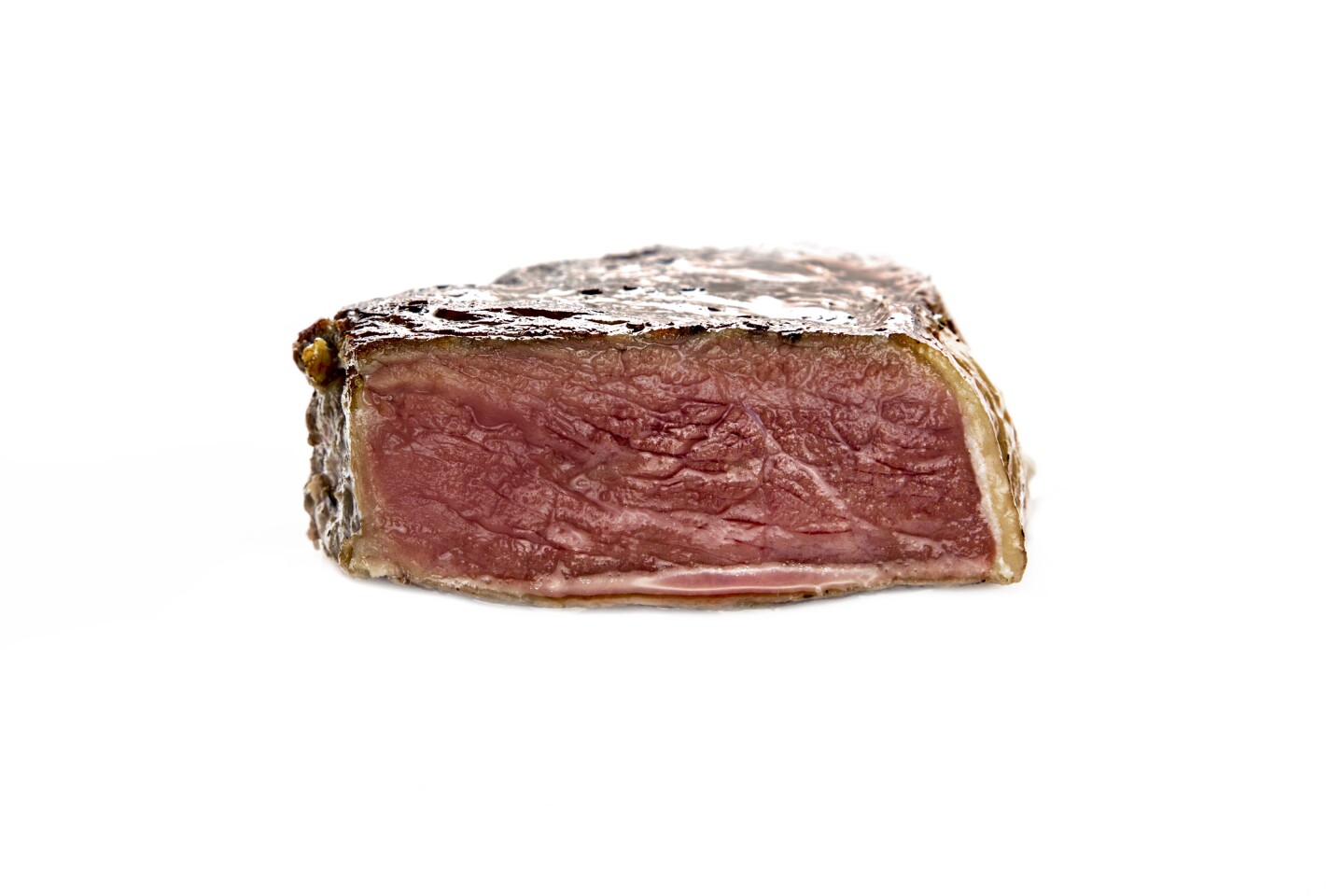With its ability to cook foods with precision, sous vide has caused a minor kitchen revolution in recent years, but its reliance on water baths and vacuum bags, plus the need to sear some foods after cooking still makes it daunting for the busy or inexperienced home chef. The Cinder Sensing Cooker, developed by San Francisco-based startup Cinder, aims to make cooking a bit easier by combining the precision of sous vide with the simplicity of a countertop grill.
Sous vide is based on the idea that the most important factor isn't the time it takes to cook something, but the temperature that the food reaches. In other words, the difference between a perfect hard boiled egg and one you can bounce like a hand ball isn't how long you boil it, but how hot the egg gets. That's because all cooking is chemistry and that chemistry is based on temperature. If an egg can be brought precisely to a set temperature and kept there, certain chemical reactions will occur. Once these are completed, the perfect egg will stay perfect whether it sits in the water for an additional five minutes or five hours.
This principle has already been embraced by the catering industry because it means that, for example, an entire evening's service worth of steaks can be cooked to perfection during the day and be ready to set on a plate at a moment's notice. The problem is that sous vide requires a special water bath with precise temperature controls, as well as special plastic bags for vacuum sealing the dishes. This means that adapting sous vide for the home can be expensive, a bit involved, and that perfect steak still needs to be seared before serving to give it the right texture and taste.

According to Cinder CEO Eric Norman, the idea behind the Cinder Sensor Cooker is to combine the precision and control of sous vide with dry cooking, the searing ability of a cast-iron frying pan, and the small counter footprint of a panini grill. For a first look, we checked out a prototype version of the Cinder and during an online video chat with Norman.
Norman says that the resemblance of the Cinder to an oversized panini grille is deliberate because the company wanted to make a machine for the home market that was understandable and accessible while doing away with the complications and the slowness of a sous vide device. The method used is similar to sous vide in that it relies on precision temperature control, but instead of water, the Cinder uses plates heating an enclosed chamber combined with sensors and a computer control system derived from spacecraft design. This allows the unit to not only cook the food, but to also automatically sear it before serving.
The Cinder weighs about 12 lb (5.4 kg), comes clad in stainless steel, and consumes 1,800 watts of power. The key to its operation are a pair of removable aluminum non-stick cooking plates, which are continuously monitored by a system of computer-controlled sensors that calculate the temperature of the plates as well as their distance apart, so the Cinder knows the thickness of the food and can adjust the cooking time accordingly. Norman says that the sensors are accurate to within a quarter of a degree and that the unit uses a virtual-thermometer algorithm to deduce the temperature of the food.

One major selling point of the Wi-Fi and Bluetooth enabled Cinder Sensing Cooker is its companion app for mobile devices. The idea is to allow the user hands-free control of the Cinder and to make operation easy by providing options from a menu, such as selecting various meats and degrees of doneness as well as an expanding selection of recipes that the user can rate and customize.
When activated, the Cinder reaches its operating temperature within seconds and remains within a fraction of a degree across the cooking surfaces. The food is then brought to the preprogrammed temperature and a notification sent to the user's handheld device when done. Meanwhile the Cinder keeps the food at an optimum temperature for up to two hours. If it's kept on hold for too long, a reminder is sent. When ready to serve, the device automatically sears the dish if needed at 550⁰ F (287⁰ C) in under 30 seconds.

During the demonstration, we saw Norman cook a steak in a lab prototype of the Cinder. The results showed a very good sear and the cross section had an even medium-rare quality with very little gray. Of course, how it tastes will have to wait until a Cinder is available for review.
The Cinder Sensing Cooker is currently available for preorder at US$499 with shipping early next year. Customers who order before March 20 will be eligible for a choice of perks or discounts.
The video below introduces the Cinder Sensing Cooker.
Source: Cinder
Introducing Cinder from Cinder on Vimeo.




























